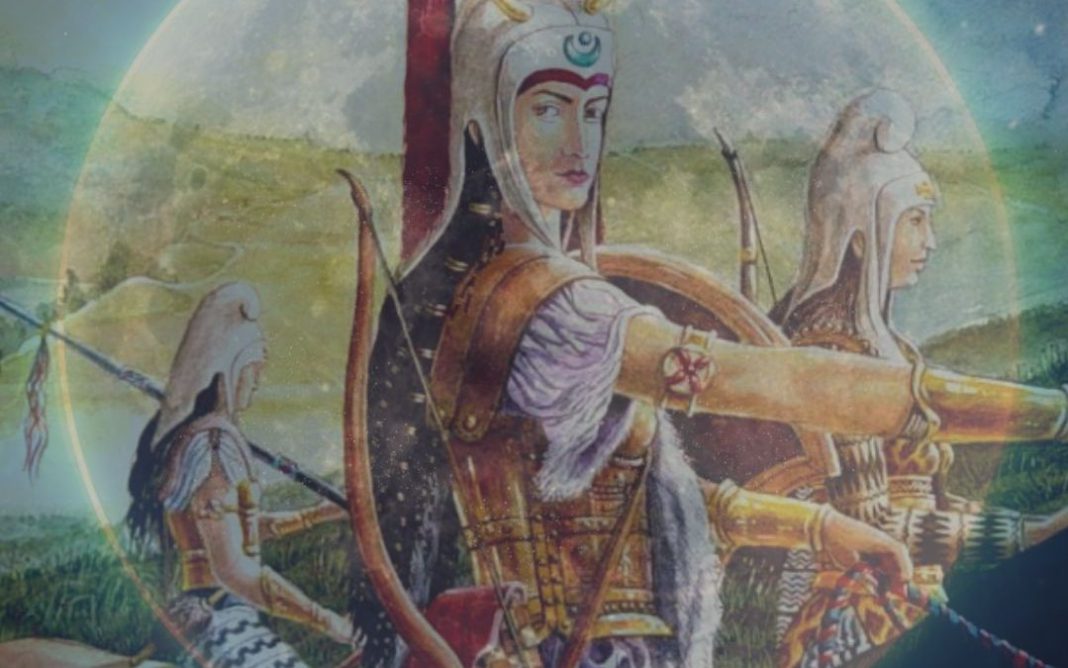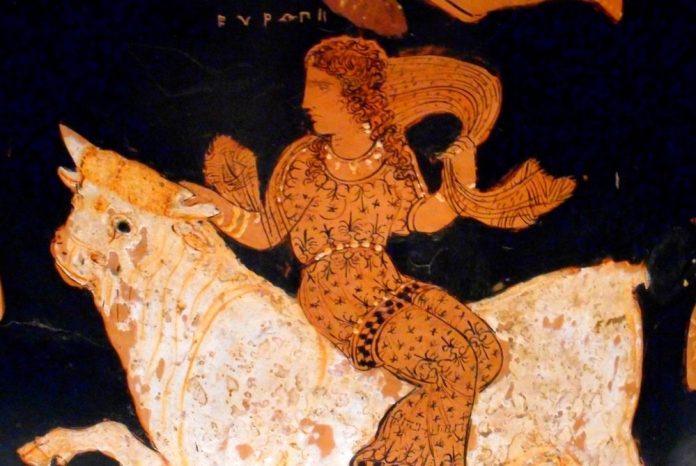The Amazons, a legendary tribe of warrior women, have captivated imaginations for centuries. These formidable figures from Greek mythology are known for their fierce independence and exceptional combat skills. According to myth, the Amazons were a society of women who rebelled against male dominance, choosing to live in isolation and engage in warfare against men. This introduction to the Amazons will explore their origins, their role in ancient myths, and their enduring significance in both ancient and modern cultures.
The earliest references to the Amazons can be found in the works of Homer, particularly in “The Iliad,” where they are depicted as formidable opponents in battle. The Amazons were often described as living in distant, exotic lands, such as the region around the Black Sea. Their queen, Penthesilea, is one of the most notable Amazonian figures, famously participating in the Trojan War and challenging the Greek hero Achilles. This story highlights the Amazons’ bravery and combat prowess, setting the stage for their legendary status.
Greek mythology portrays the Amazons as both admirable and threatening. They were admired for their strength, courage, and martial abilities, but their defiance of traditional gender roles also made them subjects of fear and fascination. The Amazons were said to exclude men from their society, only interacting with them for procreation. Male offspring were often returned to their fathers or left to fend for themselves, while female children were raised as warriors. This radical departure from the norms of ancient Greek society underscored the Amazons’ unique place in mythology.
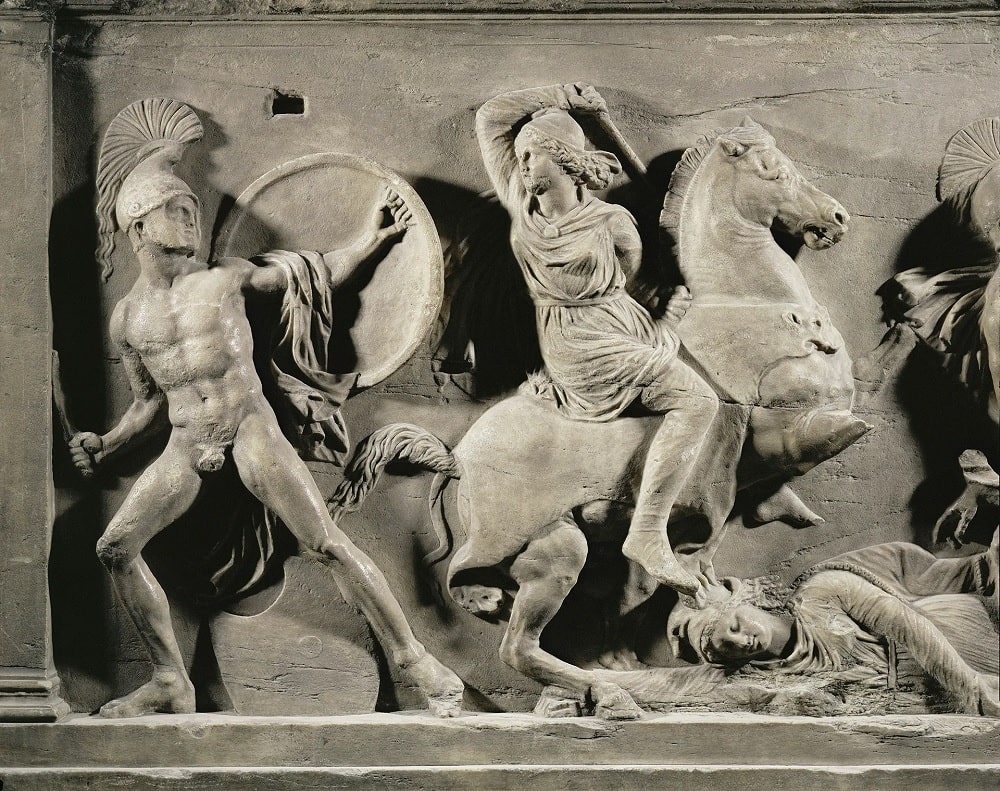
In recent years, scholars have revisited the Amazon myths, exploring their possible historical roots. Some theories suggest that the legends may have been inspired by real-life warrior women from the Scythian tribes, who lived in the same regions described in the myths. Archaeological discoveries of female warriors’ graves, complete with weapons and armor, lend some credence to these theories. While definitive evidence of the Amazons’ existence remains elusive, these findings keep the mystery alive and continue to spark curiosity.
The Amazons’ legacy endures in modern culture, influencing literature, art, and media. Their story resonates with contemporary themes of gender equality and female empowerment, making them a powerful symbol for many. As we delve deeper into the legends and possible realities of the Amazons, their mystique only grows stronger, inviting us to explore the boundaries between myth and history.
Historical Context of The Amazons in Greek Mythology
The Amazons, a legendary tribe of warrior women, first appeared in ancient Greek literature around the 8th century BCE. These fierce warriors were introduced by the epic poet Homer in his renowned works, “The Iliad” and “The Odyssey.” In “The Iliad,” the Amazons are described as “antianeirai,” meaning “those who fight like men,” underscoring their martial prowess and challenging traditional gender roles.
One of the earliest and most notable references to the Amazons is their involvement in the Trojan War. According to the myth, the Amazon queen Penthesilea led her warriors to aid the Trojans against the Greeks. She confronted Achilles, one of the greatest Greek heroes, in a fierce battle, where she ultimately met her demise. This story highlighted not only their bravery and skill in combat but also set the tone for their recurring role in Greek mythology as formidable female warriors.
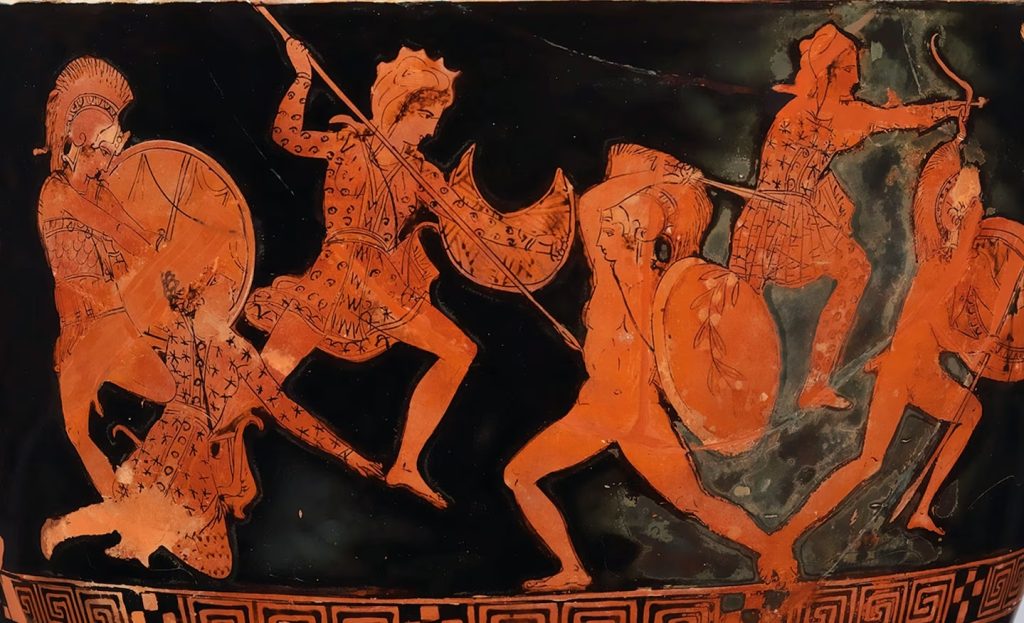
The Amazons were frequently depicted as living in remote regions, often on the fringes of the known world. Herodotus, an ancient Greek historian, wrote about the Amazons in the 5th century BCE, placing them near the Black Sea and associating them with the Scythians, a group of nomadic tribes known for their horsemanship and archery. These geographic associations contributed to the mystique and allure of the Amazons, portraying them as both exotic and untamed.
Throughout Greek mythology, the Amazons were portrayed as both admirable and dangerous. They embodied female strength and independence, qualities that were both respected and feared in ancient Greek society. The myths often depicted them as adversaries to Greek heroes, such as Heracles (Hercules) and Theseus. Heracles was tasked with obtaining the girdle of the Amazon queen Hippolyta as one of his twelve labors, while Theseus abducted the Amazon queen Antiope, leading to a conflict between the Athenians and the Amazons.
The tales of the Amazons were not merely about battles and conflicts; they also explored themes of gender, power, and societal roles. The very existence of the Amazons challenged the patriarchal norms of ancient Greece, presenting a society where women not only ruled but also excelled in roles traditionally reserved for men.
In modern times, archaeological discoveries have sparked renewed interest in the historical basis for the Amazon myths. Excavations in regions like the Eurasian steppes have uncovered graves of female warriors buried with weapons, suggesting that the legends of the Amazons might have roots in historical fact. These findings have led some scholars to speculate that the Amazons were inspired by real-life warrior women from ancient nomadic cultures.
The historical context of the Amazons in Greek mythology reveals a complex interplay between myth and reality, reflecting ancient Greek attitudes toward gender and power. As we continue to explore these fascinating stories, the Amazons remain a powerful symbol of female strength and independence, captivating our imaginations and challenging our perceptions of history and mythology.
The Amazons in Ancient Myths: Key Stories and Legends
The Amazons, renowned for their strength and independence, are central to many captivating myths in ancient Greek literature. These stories not only highlight their formidable skills in battle but also cement their place in Greek mythology as symbols of female power.
One of the most famous myths involving the Amazons is their encounter with Hercules, known in Greek as Heracles. As part of his Twelve Labors, Hercules was tasked with obtaining the girdle of Hippolyta, the queen of the Amazons. According to the myth, Hippolyta initially agreed to give Hercules the girdle willingly. However, Hera, the queen of the gods and a frequent adversary of Hercules, spread rumors that Hercules was planning to abduct Hippolyta. This led to a fierce battle between Hercules and the Amazons, resulting in Hercules taking the girdle by force. This myth showcases the strength and bravery of the Amazons while also highlighting their vulnerability to deception and conflict.
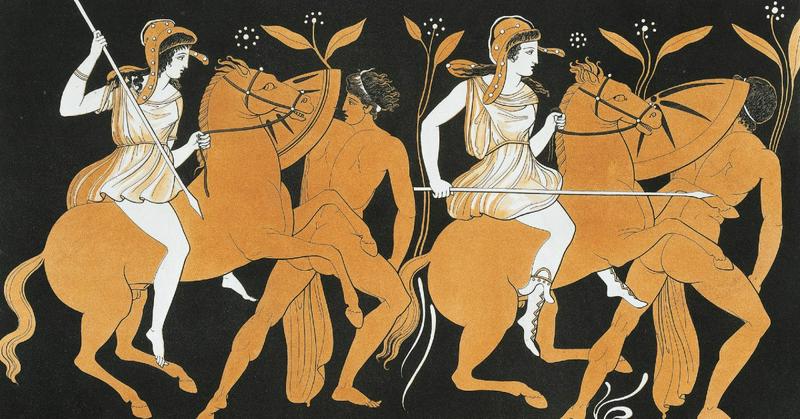
Another key story featuring the Amazons is their involvement in the Trojan War. The Amazon queen Penthesilea led her warriors to support the Trojans against the Greeks. In a dramatic and tragic encounter, Penthesilea faced Achilles, one of the greatest Greek heroes. Despite her valiant efforts, she was ultimately slain by Achilles. According to some versions of the myth, Achilles was struck by her beauty and bravery, feeling deep remorse after her death. This tale emphasizes the martial prowess of the Amazons and their willingness to engage in epic conflicts.
The Amazons also clashed with the hero Theseus. In this myth, Theseus encountered the Amazons during his adventures and abducted their queen, Antiope. This led to a war between the Amazons and the Athenians. The Amazons invaded Athens, and a fierce battle ensued. Despite their courage and skill, the Amazons were eventually defeated. This myth highlights the themes of abduction and conflict, common in many stories involving the Amazons.
These key stories and legends have contributed significantly to the enduring legacy of the Amazons. They are depicted as powerful, independent women who could challenge even the mightiest of Greek heroes. The myths underscore their role as both warriors and queens, capable of leading their people into battle and standing up against the most formidable foes.
The legacy of the Amazons continues to resonate in modern culture. They are often portrayed as symbols of female empowerment and strength, inspiring countless works of literature, art, and media. As we explore these ancient myths, the Amazons remain a powerful reminder of the enduring appeal of stories that celebrate courage, independence, and the spirit of adventure.
Archaeological Discoveries and Theories about The Amazons
The Amazons, the legendary warrior women of Greek mythology, have long fascinated historians and archaeologists. Recent archaeological discoveries and scholarly research have provided new insights and sparked debates about whether there is a historical basis for these mythical figures.
In recent years, significant archaeological findings in the Eurasian steppes, particularly in the region historically inhabited by the Scythians, have shed light on the possible origins of the Amazon legends. Excavations have revealed burial sites containing the remains of women buried with weapons, such as swords, bows, and arrows. These graves suggest that women in these nomadic tribes were not only active participants in combat but were also honored as warriors in death.
One of the most notable discoveries was made in Kazakhstan, where a burial site dating back to the 4th to 6th centuries BCE was unearthed. Among the remains were those of a young woman buried with an array of weapons, indicating her status as a warrior. This find supports the theory that the myths of the Amazons may have been inspired by real-life warrior women from ancient nomadic cultures.
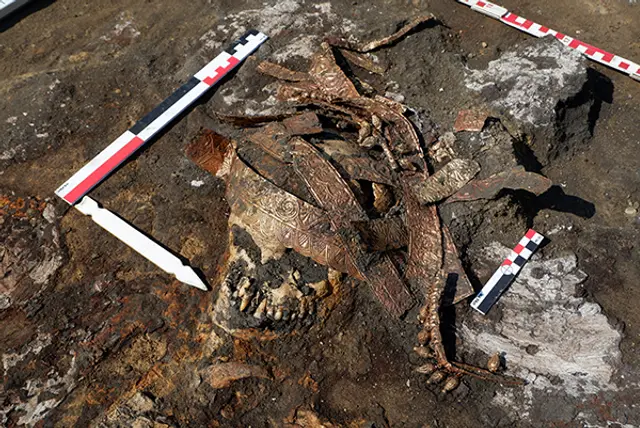
The Scythians, a group of nomadic tribes known for their horsemanship and archery, lived in the same regions described in the Amazon myths. Herodotus, the ancient Greek historian, wrote about the Scythian women and their combat skills, which closely resemble the descriptions of the Amazons. This connection has led some scholars to propose that the Greek stories about the Amazons were based on encounters with or reports about these warrior women.
Additionally, DNA analysis of remains from these burial sites has confirmed that many of the warriors were indeed female. This challenges the traditional notion that warfare in ancient societies was exclusively a male domain and provides a historical basis for the Amazon legends. These findings have given credence to the idea that the Amazons were not purely mythical but were inspired by real women who defied gender norms and participated in combat.
Despite these compelling discoveries, there remains some skepticism among scholars. While the evidence suggests that women warriors existed in ancient nomadic cultures, the extent to which these individuals directly influenced the Amazon myths is still debated. Some argue that the myths were purely symbolic, representing Greek society’s anxieties and fantasies about powerful women, rather than based on actual encounters.
Recent archaeological discoveries and research have provided intriguing evidence that the Amazon legends may have a historical basis. The uncovering of female warrior graves and the connection to the Scythian tribes suggest that the myths of the Amazons could have been inspired by real-life women who were skilled in combat. These findings continue to fuel our fascination with the Amazons and offer a glimpse into the complex interplay between myth and history.
The Amazons in Modern Interpretations and Popular Culture
The Amazons, legendary warrior women of Greek mythology, have captivated imaginations for centuries. Over time, their image has evolved, significantly influencing modern literature, film, and art. These contemporary interpretations continue to shape our perception of the Amazons, transforming them from ancient myths into enduring symbols of female strength and empowerment.
In literature, the Amazons have been reimagined in various ways. One of the most notable modern interpretations is in the comic book and film franchise “Wonder Woman.” Created in 1941 by William Moulton Marston, Wonder Woman is depicted as an Amazon princess named Diana. Raised on the all-female island of Themyscira, Diana embodies the strength, courage, and independence associated with the Amazons. Her character has become an iconic representation of female empowerment and has inspired countless readers and viewers around the world.
Film and television have also played a significant role in reviving and reshaping the image of the Amazons. The 2017 film “Wonder Woman,” directed by Patty Jenkins, brought the story of Diana and the Amazons to a new generation. The film’s portrayal of the Amazons as skilled warriors and wise leaders resonated with audiences and highlighted their timeless appeal. Similarly, the Amazons have appeared in other popular media, such as the television series “Xena: Warrior Princess,” further cementing their place in modern popular culture.

Artistic depictions of the Amazons have evolved as well, reflecting contemporary values and aesthetics. Artists have portrayed the Amazons in various styles, from classical paintings to modern graphic art. These depictions often emphasize their physical prowess and defiance of traditional gender roles, reinforcing their image as powerful and independent women.
Beyond fiction and art, the Amazons have also influenced discussions on gender roles and feminism. Their story is frequently cited in debates about women’s capabilities and the breaking of societal norms. The Amazons’ rejection of a male-dominated society and their creation of an independent, female-led community resonate with modern feminist movements, highlighting themes of autonomy and equality.
Contemporary interpretations of the Amazons have not only kept their legend alive but also adapted it to reflect current values and issues. The Amazons’ portrayal in modern media continues to evolve, ensuring their relevance in today’s cultural landscape. They serve as powerful symbols of female strength, inspiring generations to challenge traditional roles and pursue equality.
The Amazons have transcended their origins in Greek mythology to become enduring icons in modern culture. Through literature, film, and art, they continue to inspire and influence perceptions of female strength and independence. As their story is retold and reimagined, the Amazons remain a potent symbol of empowerment and resilience, bridging the gap between ancient myths and contemporary values.
Frequently Asked Questions (FAQs)
1. Were the Amazons real?
The existence of the Amazons exactly as depicted in Greek myths remains unproven. However, archaeological discoveries of female warrior burials suggest that real-life warrior women may have inspired the legends.
2. What is Wonder Woman’s connection to the Amazons?
Wonder Woman, a popular comic book and film character, is an Amazon princess named Diana. Her portrayal embodies the strength, courage, and independence associated with the Amazons and has become a modern symbol of female empowerment.
3. How are the Amazons portrayed in modern media?
The Amazons are frequently depicted in literature, film, and art. These portrayals range from classical paintings to modern graphic novels, often emphasizing their physical prowess and defiance of traditional gender roles.
4. What is the cultural significance of the Amazons today?
The Amazons serve as a powerful symbol of female strength and independence. Their story resonates in discussions about feminism and gender equality, highlighting themes of empowerment and the breaking of societal norms.
5. Why do the Amazons continue to fascinate us?
The Amazons’ timeless appeal lies in the themes they represent: a society of strong, independent women challenging expectations. Their enduring presence in popular culture and their connection to contemporary issues ensure their continued relevance.
Ongoing Mysteries and Unanswered Questions about The Amazons
The Amazons, the legendary warrior women of Greek mythology, continue to fascinate and intrigue scholars and enthusiasts alike. Despite extensive research and archaeological discoveries, many mysteries about the Amazons remain unresolved. These ongoing questions fuel debates about their existence and highlight the cultural significance they hold today, keeping their legend alive in our collective imagination.
One of the primary mysteries surrounding the Amazons is the question of their historical existence. While ancient Greek texts, such as those by Herodotus and Homer, provide detailed accounts of these warrior women, concrete evidence proving they existed as described in myths is elusive. Archaeological discoveries, such as the burial sites of female warriors in the Eurasian steppes, suggest that women did participate in combat in ancient times. However, whether these women were the Amazons of legend or simply inspired the stories remains a topic of debate.
Another unanswered question is the true origin of the Amazon myths. Some scholars believe that the stories were purely symbolic, reflecting Greek society’s views on gender roles and the fear of powerful women. Others argue that the myths were based on real encounters with warrior women from nomadic tribes like the Scythians. These tribes lived in regions near the Black Sea, where the Amazons were said to reside. The lack of definitive evidence means that the origins of the Amazon legends continue to be a subject of speculation and research.
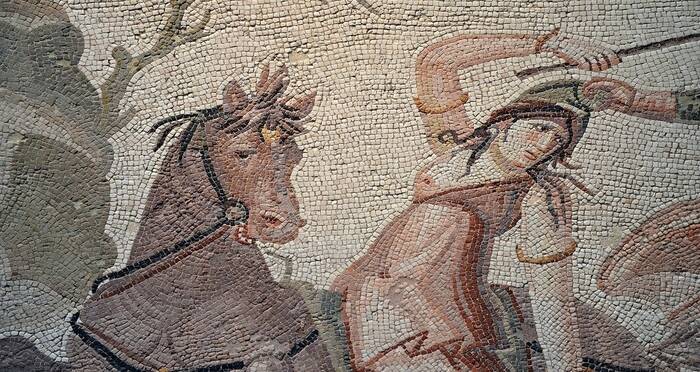
The cultural significance of the Amazons also raises intriguing questions. Throughout history, the Amazons have been portrayed as symbols of female strength and independence. Their rejection of male-dominated society and their prowess in battle challenged traditional gender norms. Today, the Amazons are often referenced in discussions about feminism and gender equality. Their story resonates with modern audiences, emphasizing themes of empowerment and autonomy.
What makes the legend of the Amazons endure is their timeless appeal and the universal themes they represent. The idea of a society of strong, independent women who can hold their own against male adversaries is compelling and inspirational. This enduring fascination is evident in their continued presence in modern literature, film, and art. The Amazons serve as a powerful symbol of resistance against oppression and the fight for equality, making them relevant across different cultures and eras.
The ongoing mysteries and unanswered questions about the Amazons keep their legend alive and vibrant. Whether they existed as described in ancient myths or are purely a product of cultural imagination, the Amazons continue to captivate us. Their story embodies the struggle for empowerment and equality, ensuring that the legend of the Amazons remains a significant and enduring part of our cultural heritage.
The Enduring Legacy of The Amazons
The Amazons, legendary warrior women of Greek mythology, have left an indelible mark on both ancient and modern cultures. Throughout this exploration, we have delved into their historical context, key myths, archaeological discoveries, modern interpretations, and ongoing mysteries. Each facet of their story contributes to their lasting impact and the fascination they continue to inspire.
In ancient Greek literature, the Amazons were introduced as fierce, independent warriors who defied traditional gender roles. Myths such as their battles with Hercules and Achilles, where Amphimedon’s Heroic Fate was demonstrated, highlighted their strength and bravery, establishing them as formidable opponents. These stories not only entertained but also challenged the societal norms of the time, presenting a vision of women who could rival men in combat and leadership.
Recent archaeological findings have added a layer of historical intrigue to the Amazon legends. Discoveries of female warrior graves in the Eurasian steppes suggest that women in ancient nomadic tribes did engage in warfare, lending some credence to the myths. These findings have fueled scholarly debates about the possible real-life inspirations for the Amazons, blurring the lines between myth and history.
In modern culture, the Amazons have been reimagined and celebrated in various forms. Characters like Wonder Woman have brought the Amazons to a new generation, embodying ideals of female empowerment and strength. Films, literature, and art continue to draw on Amazonian themes, highlighting their relevance in contemporary discussions about gender equality and female autonomy.
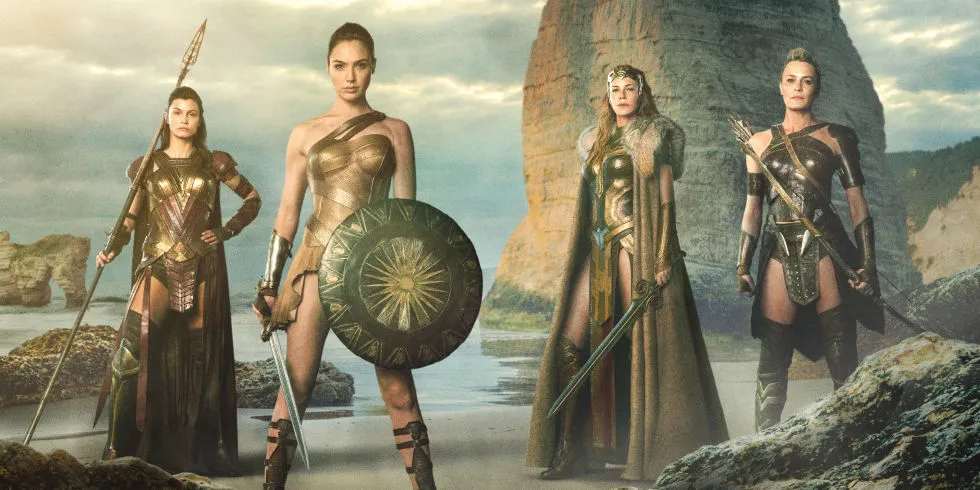
The enduring legacy of the Amazons lies in their powerful symbolism. They represent the timeless struggle for equality and the breaking of gender barriers. Their stories encourage us to rethink traditional power dynamics and inspire us to envision a world where strength and independence are not confined by gender.
As we reflect on the Amazons’ impact, it becomes clear that their legend transcends time and culture. They invite us to explore the complexities of gender and power, both in the past and in our current society. The Amazons remind us of the potential for resilience and strength in all individuals, regardless of gender.
In conclusion, the Amazons’ legacy is a testament to their enduring appeal and significance. They continue to captivate our imaginations and challenge our perceptions of history and mythology. For those intrigued by their story, there is much more to discover and explore. The Amazons offer a rich tapestry of myth and reality, inviting us to delve deeper into their fascinating world and the lessons it holds for understanding gender and power dynamics throughout history.
Use of Our Content
⚠️ Content on “Mystery Uncover” is protected under US and International Copyright Laws.
You are free to reuse, republish, and share our content by giving credit to the source as Mystery Uncover with a link to the original material on mysteryuncover.com.


